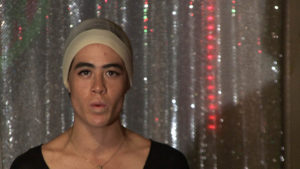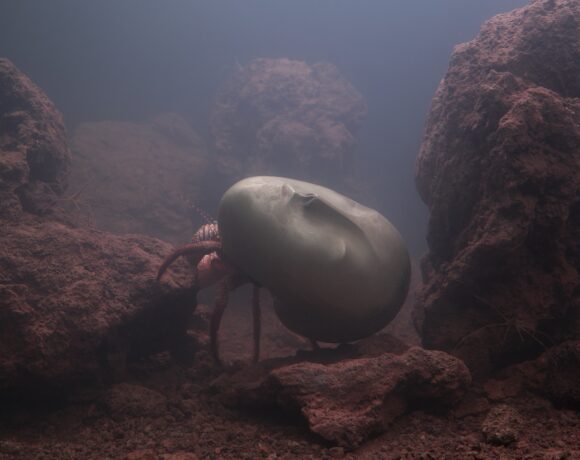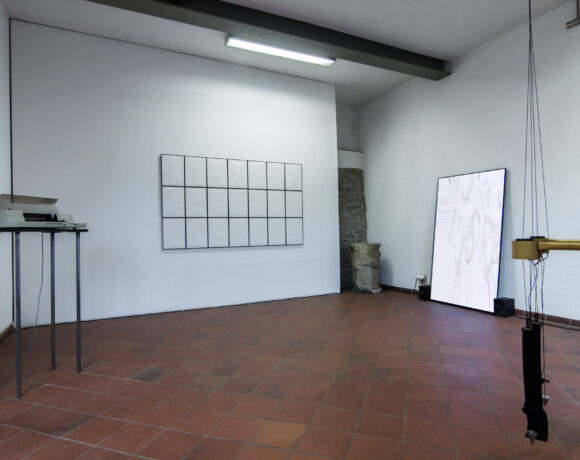The optical theories of Rood and Chevreul have changed the way of conceiving vision, triggering the crazy experiments of Seurat and promising the birth of pointillisme. Photography, in the same years, was forcing easel painting to go beyond the mimesis of the real. Electromagnetism and the advent of transoceanic cable, to provide a last example, changed again, at the beginning of the 60s, the perception of time and space, inside and outside the art field. As art critic Renato Barilli sustains in his well-known thesis on the phenomenology of styles, the arts have always kept up with progress of other disciplines; and it is precisely in conjunction with the great changes in science and technology, rather than with the epoch-making dates of history, that we find major changes in language and forms of the arts. So, rather than the fall of the Berlin Wall or the protest of Tiananmen Square, it is the Internet and the World Wide Web that have been tracing, since 1989, a new horizon for art. A revolution which is faced, with a retrospective approach, by the aim of curators Eva Respini and Jeffrey De Blois, in the first major American exhibition about this subject.
Almost 30 years after Berners-Lee’s invention saw the light, the Institute of Contemporary Art in Boston hosts “Art in the Age of Internet, 1989 to Today”: an ambitious exhibition, at the same time anthological and thematic, which investigates the radical impact of internet culture on visual arts. Displaying more than 60 international artists, from younger and more contemporary like Jon Rafman, Ed Atkins or Anicka Yi, to pioneers like Nam June Paik, the exhibition offers a reflection on the metamorphosis of artistic practices following the changes in individual and global perception, all of it under the banner of digital culture.
Among paintings, sculptures, video-art, pictures, web-based projects, virtual reality and even performances, a wide selection of representative works depicts, and somehow reminds us, how internet moulds our life and how technology moulds the human being in contemporary society. Accustomed to the radicalized and daily presence of internet and its images’ repertory, we have almost forgot how much they concur in shaping our reality, and how they have, across time, forged it.
The five sections in which the exhibition is split in are oriented towards five thematic hubs, so as to raise some of the most incisive and sensitive issues related to the Web’s deep influence: “Networks and Circulation”; “Hybrid Bodies”; “Virtual Worlds”; “State of Surveillance”; “Performing the Self”. Focus is, here, required in order to provide a path and offer reading keys, throughout this potentially inexhaustible topic. Open trails that cross themselves, but allow to build historical confrontation: internet as a site of surveillance (Jill Magic, among others) and resistance (Sondra Perry); the spread and control of images and information (Wu Twang, Trevor Pagnel), or the possibility of exploring identity, rediscovering, rebuilding or inventing the self (Cindy Sherman, Mark Benson, DIS collective, ..).
A dense network of paths and readings, such as in the famous work “Electronic Superhighway” by Nam June Paik, an artist on show with Internet Dream, in a chorus of works that are candidates for becoming emblematic works of the convulsive contemporary historiography, still far away from a pretended critical objectivity. Works such as Lee Lozano’s watchful eye, in ’92, or, more recently, the “encyclopedic” video Grosse Fatigue by Camille Henrot, awarded at the 55th Venice Biennale.
According to the words of Eva Respini, the idea was, rather than taking a snapshot of the moment, to tell an “intergenerational story”, as it’s also shown by the artists represented, which vary in age, ethnicity, nationality and gender. After almost three decades of internet practice we are witnesses to the blossoming of the so-called digital native artists, who justly find wide space in this exhibition.
Furthermore the project is not a mere exhibition: it’s purpose goes beyond institutional boundaries, including an academic publication and a dedicated extended web platform, as well as involving the whole city of Boston with various appointments. Boston presents itself as a suitable place for this first attempt of a wide retrospective, being a city that has in fact marked the history of technology. Here was sent the first e-mail, while facebook found light in the not-so-distant Harvard college.
Edoardo De Cobelli
Info:
Art in the Age of the Internet, 1989 to Today
February 7 – May 20, 2018
Organized by Eva Respini, Barbara Lee Chief Curator, with Jeffrey De Blois, Assistant Curator
ICA Institute of Contemporary Art/Boston
25 Harbor Shore Drive
Boston, MA 02210
 Rafael Lozano-Hemmer, Surface Tension, 1992, installation view Rafael Lozano-Hemmer: Trackers, La Gaîté Lyrique, Paris, 2011 courtesy the Artist and Bitforms Gallery New York © Rafael Lozano-Hemmer
Rafael Lozano-Hemmer, Surface Tension, 1992, installation view Rafael Lozano-Hemmer: Trackers, La Gaîté Lyrique, Paris, 2011 courtesy the Artist and Bitforms Gallery New York © Rafael Lozano-Hemmer
 Makiko Mori, Subway, 1994 Courtesy Makiko Mori / Art Resource, New York © Makiko Mori 2009 all rights reserved
Makiko Mori, Subway, 1994 Courtesy Makiko Mori / Art Resource, New York © Makiko Mori 2009 all rights reserved
 Wu Tsang, Shape of a right Statement, (still) 2008 courtesy the Artist and Galerie Isabella Bortolozzi, Berlin © Wu Tsang
Wu Tsang, Shape of a right Statement, (still) 2008 courtesy the Artist and Galerie Isabella Bortolozzi, Berlin © Wu Tsang
 Pierre Huyghe, One Million Kingdoms (still), 2001, courtesy the Artist and Marian Goodman Gallery New York © Pierre Huyghe
Pierre Huyghe, One Million Kingdoms (still), 2001, courtesy the Artist and Marian Goodman Gallery New York © Pierre Huyghe
 Mark Leckey, Greenscreenrefrigeratoraction (still), 2010, courtesy the Artist and Gavin Brown’s Enterprise, New York / Rome © Mark Leckey
Mark Leckey, Greenscreenrefrigeratoraction (still), 2010, courtesy the Artist and Gavin Brown’s Enterprise, New York / Rome © Mark Leckey
 Camille Henrot, Grosse Fatigue (still), 2013 courtesy the Artist, Silex Films and Kamel Mennour Paris / London © ADAGP Camille Henrot
Camille Henrot, Grosse Fatigue (still), 2013 courtesy the Artist, Silex Films and Kamel Mennour Paris / London © ADAGP Camille Henrot

is a contemporary art magazine since 1980







NO COMMENT